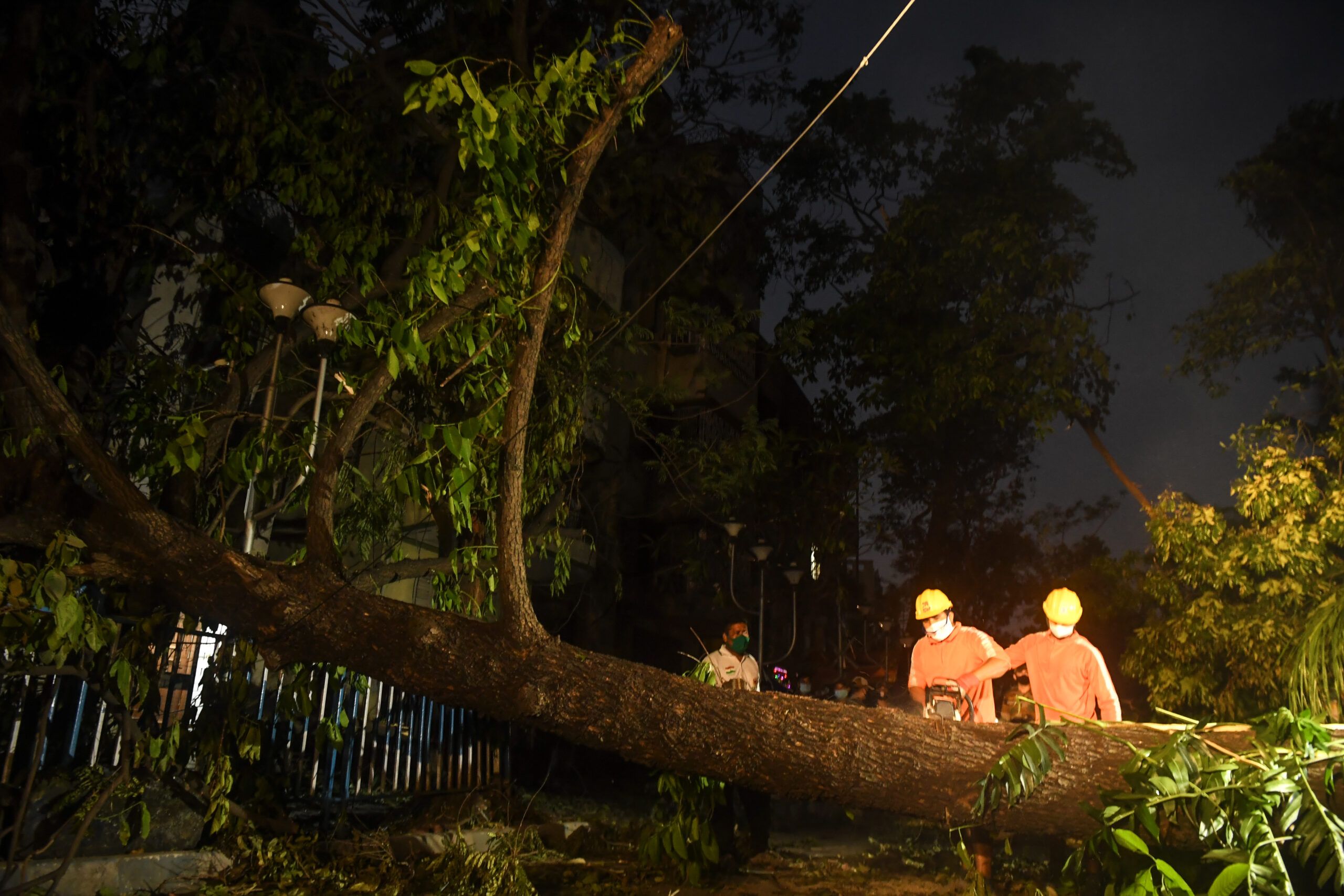Army called in to help cyclone-ravaged Indian city
The Indian military has been mobilised to help with the clean-up in the cyclone-ravaged city of Kolkata (Dibyangshu SARKAR)
Kolkata (AFP) – The Indian Army has been mobilised to help with the clean-up after a devastating cyclone hit the eastern city of Kolkata, as thousands on Sunday protested again over power and water shortages.
At least 112 people were killed in eastern India and Bangladesh after Cyclone Amphan — the strongest storm to hit the region since 1999 — struck on Wednesday.
Streets were flooded in Kolkata, home to 15 million people, while power lines were brought down and fallen trees blocked roads.
Authorities already grappling with the coronavirus struggled to clear roads — some which remained flooded — as well as restore electricity and water to homes.
Police used batons to disperse the protesters as Mamata Banerjee, the chief minister of West Bengal — of which Kolkata is the capital — called for calm.
“This is a huge disaster. We need to have patience, because nobody has seen such a disaster before,” Banerjee said Sunday.
“We are not sitting idle… A shortage of manpower stemming from the COVID-19 pandemic is hobbling relief and restoration efforts.”
Around 200 soldiers from the Indian Army’s Eastern Command joined more than 4,000 disaster relief personnel and local volunteers working on the streets, a military officer told AFP.
One of Asia’s oldest botanic gardens was not spared by the cyclone, with more than 1,000 trees uprooted and hundreds more damaged, officials said.
“It ravaged the more than two-centuries-old Great Banyan Tree, one of the main attractions,” said Kanak Das, director of Kolkata’s Indian Botanical Garden, founded in 1786 by an East India Company officer.
“The pride of the garden is lost.”
The popular century-old Baobab Tree and the “Mad Tree” — which locals say has leaves that appear to take different shapes — were also uprooted during the storm, Das added.
The cyclone also smashed into the Sundarbans, a UNESCO world heritage site straddling India and Bangladesh famed for its mangrove forest, destroying farms and livelihoods.
Banerjee, who visited the Sundarbans Saturday, said the embankments of at least 25 rivers were breached, impacting at least 700 villages.
She warned that “large swathes of the Sundarbans could turn infertile as saline water starts sipping into the fields”.
Gobinda Mondal, 35, who lives in a remote village in the region, told AFP the cyclone had “undone years of progress in curbing poverty in the coastal areas of the state”.
“We are lost,” he added.
Disclaimer: Validity of the above story is for 7 Days from original date of publishing. Source: AFP.


